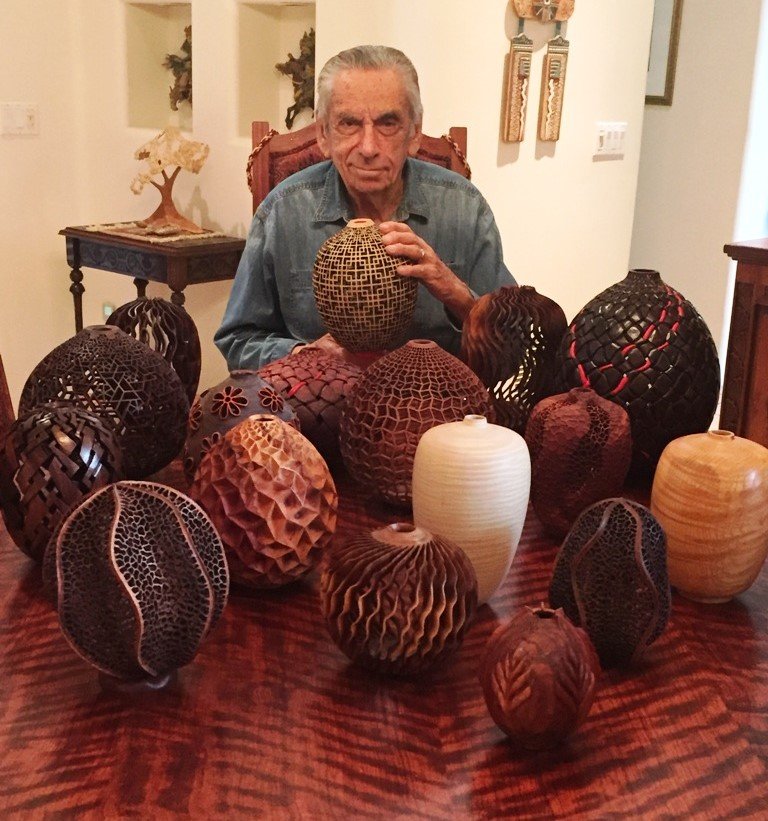About the Artist
-

Photo: "Arizona Sunrise"
About the Artist
I have been a woodturner —and intrigued with the process—since 1970. For the most part I am self-taught, and have focused on the expressiveness of hollow forms since the early 1990’s. I presently reside in the beautiful Sonoran Desert, in Scottsdale, Arizona, with a 400 sq. ft. studio, adequate for my needs. I have been a member of the American Association of Woodturners (AAW) since 1986 (#297), a former member of the Central New England Woodturners (CNEW) (1987-1994), and a member of the Arizona Woodturners Association (AWA) since 1993. Over the years I have demonstrated at many symposia and local organizations, nationally and internationally. My work resides in numerous private collections, and several museums, including the Smithsonian, Museum of Fine Arts, Boston, the Philadelphia Art Museum, and the Peabody-Essex Museum of Salem, Massachusetts. A detailed list is under the “Collections” link.
Recipient of the 2023 AAW Merit Award
For several decades, J Paul Fennell has continuously developed and refined his unique carved and pierced vessels, creating a body of work that has brought him recognition both within and outside of the turning field. His fascination with the vessel form and love of the natural world has motivated of his work since the mid-90s, with pierced series using both abstract and realistic depictions of patterns from the natural world. He uses found and salvaged wood whenever possible. Paul's work is held in more than fourteen major public museum collections, in many private collections. Paul's nomination was supported by the committee because his work exemplifies the highest standards of artistic quality, craftsmanship and dedication, and his support of the field through writing, presentations, and teaching has added immeasurably to the field. (Tib Shaw, curator, American Association of Woodturners)
-
Photo: The Fennell "Family"
Artist Statement
The sources of inspiration for my work come from opening your eyes and mind to your surroundings and experiences—something the famous Canadian photographer Freeman Patterson calls “the art of seeing.” Like many, my main sources are derived from nature and architecture: I look for patterns and textures within these sources, and from my perspective, incorporate them within the hollow form aesthetic. Some of these are in the form of an embellishment such as texturing; others are more abstract, and redefine the vessel as a sculptural form depicting a theme or idea of interest to me.
The vessel form is intriguing to me in that it is a common artifact of humanity, timeless and ubiquitous culturally. When these artifacts are discovered or unearthed, we learn much from societies of the past because of their particular form and unpretentious embellishment of cultural symbols, sacred icons and images that were important to them in their everyday lives. It seems natural to me to follow this path of creating work—through form, embellishment and narrative—that relates similarly but uniquely to my own experiences, relationships, beliefs and things that are personally significant.
J. Paul Fennell
